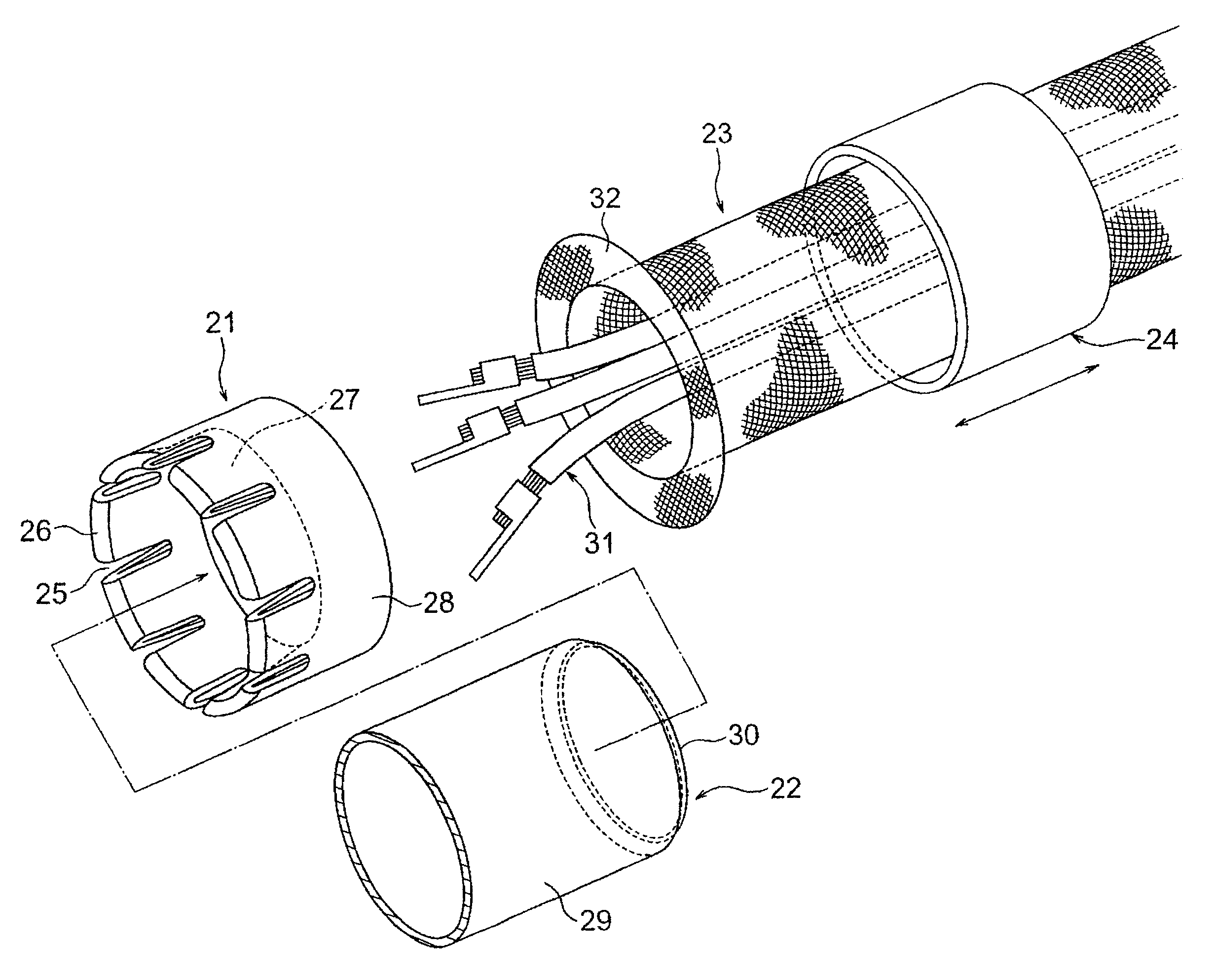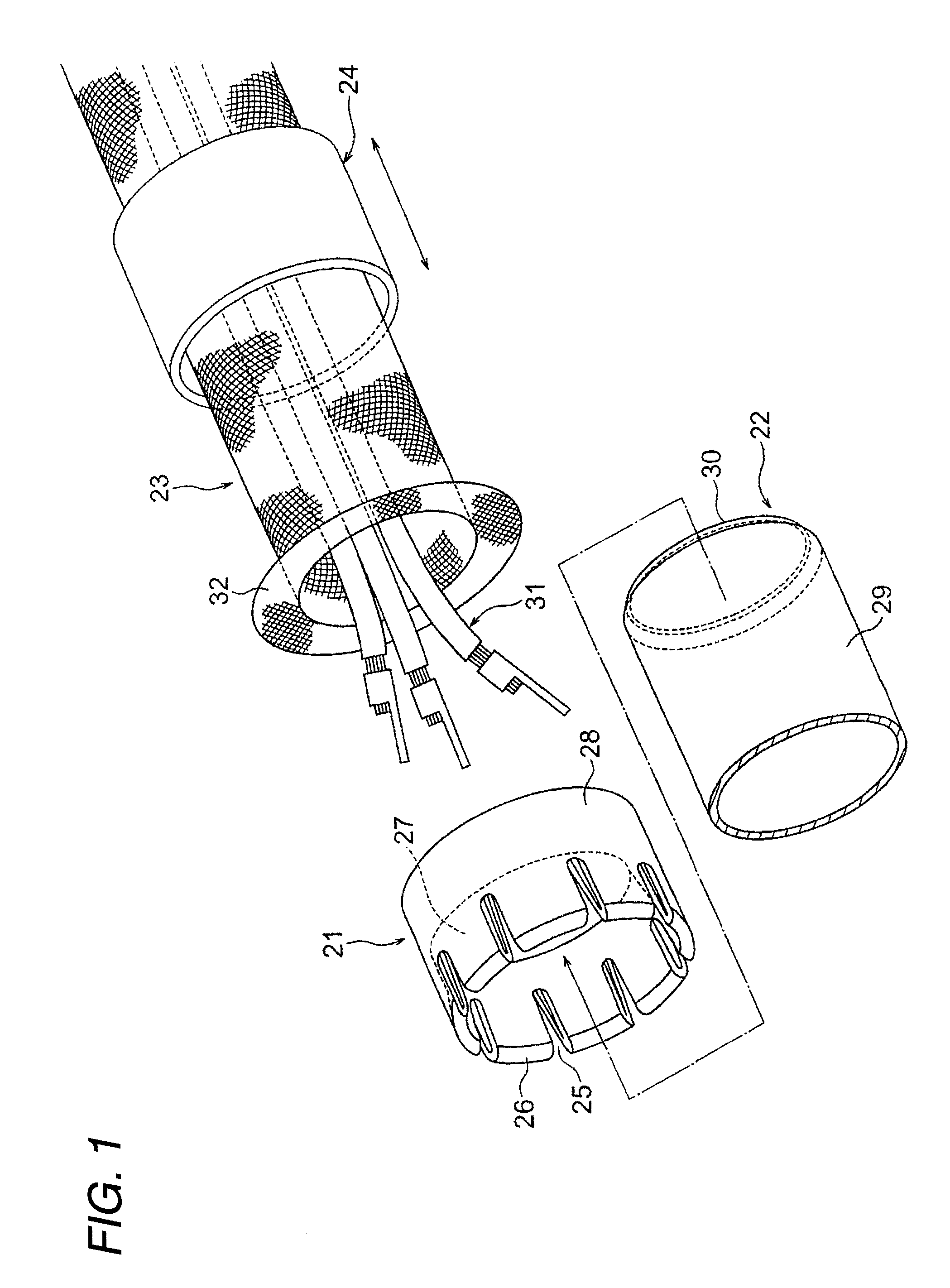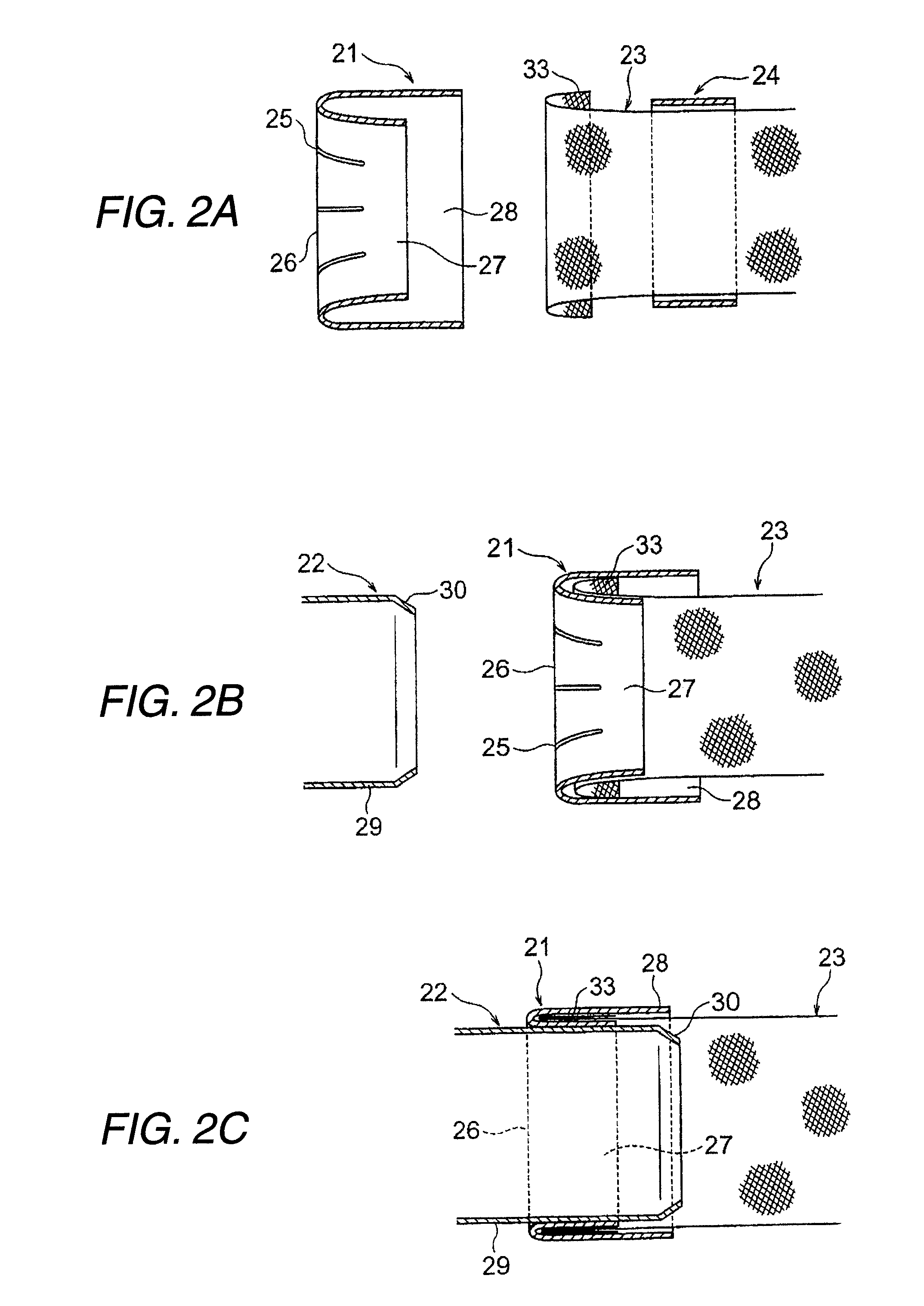Shield end processing structure
a processing structure and shield technology, applied in the direction of coupling protective earth/shield arrangement, connection contact member material, coupling device connection, etc., can solve the problems of inability to achieve peripheral press-clamping, and inability to achieve uniform press-clamping condition. , to achieve the effect of enhancing the efficiency of operation and not increasing the time and labor required for the end processing operation
- Summary
- Abstract
- Description
- Claims
- Application Information
AI Technical Summary
Benefits of technology
Problems solved by technology
Method used
Image
Examples
Embodiment Construction
[0020]The present invention will now be described with reference to the drawings. FIG. 1 is an exploded perspective view showing one preferred embodiment of a shield end processing structure of the invention. FIGS. 2A to 2C are views explanatory of an operation for fixing an end portion of a shielding layer.
[0021]In FIG. 1, reference numeral 21 denotes a shield ring made of electrically-conductive metal. Reference numeral 22 denotes a shield shell made of electrically-conductive metal as is the case with the shield ring 21. The shield ring 21 and the shield shell 22 jointly provide a structure (shield end processing structure) in which by inserting the shield shell 22 into an inner periphery of the shield ring 21, the shield ring 21 and the shield shell 22 are fixed to the end portion of the tubular shielding layer 23. Reference numeral 24 denotes a pushing jig 24 of a tubular shape used for inserting the end portion of the shielding layer 23 into the shield ring 21. The constituent...
PUM
 Login to View More
Login to View More Abstract
Description
Claims
Application Information
 Login to View More
Login to View More - R&D
- Intellectual Property
- Life Sciences
- Materials
- Tech Scout
- Unparalleled Data Quality
- Higher Quality Content
- 60% Fewer Hallucinations
Browse by: Latest US Patents, China's latest patents, Technical Efficacy Thesaurus, Application Domain, Technology Topic, Popular Technical Reports.
© 2025 PatSnap. All rights reserved.Legal|Privacy policy|Modern Slavery Act Transparency Statement|Sitemap|About US| Contact US: help@patsnap.com



